
Under the theme of "The Art of Unpacking" I write reflective blogs because of three loves: (a) I love chatting away to myself, shaping-ideas and smithing-words; (b) I love unpacking what swirls around me, thinking my own thoughts about it all; and (c) I love serving others, looking for ways to resource them with new ideas. With those motivators in view, and since this was my 800th post, I thought I would provide a candid autobiographical reflection on almost six decades of life.
In my 10s: a way of privilege
I will be forever thankful for the opportunity to express to my parents my two great gratitudes in the final days of each of their lives: bringing me to Jesus, and taking me to India. There is an immense privilege to be found in growing up as a guest in another country. To remain an outsider—listening, watching, learning—and then, along the way, to develop an affection for, and an affinity with, people unlike yourself.
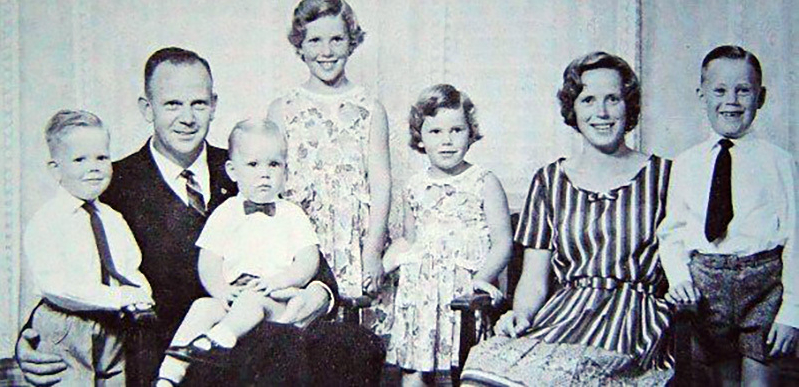
It hasn’t always been easy. Bishop Azariah of Dornakal India, whose book I recently reviewed, was described as a ‘perpetual foreigner’. Yep, I hear ya Bishop. I was 36 before I stayed in one place longer than five years—and all but one of the earlier shifts had been inter-continental. But that’s okay. I have tasted the truth in C.S. Lewis’ words and for this I am thankful: “a man who has lived in many places is not likely to be deceived by the local errors of his native village” (from "The Weight of Glory"). This is partly why I am so impatient with nationalisms—unless, of course, your nation’s existence is under threat—and why, from these early years, I gravitated towards being, in the words of John Stott, "a committed internationalist".
In my 20s: a way of living
As a young pastor in a tiny church in Southland, a remote part of New Zealand, I knew little more than to love my people—and to feed them. Off we went, Bible book after Bible book, into one sermon series after another. Wherever possible a John Stott commentary would accompany me, as was the case in that first year with his "Christian Counter-Culture" and a series through the Sermon on the Mount.
His chapter on “A Christian’s Influence: Salt and Light” captivated me. Ahh, the tension in avoiding the twin dangers of worldliness (by being the light) and unworldliness (by being the salt). I stumbled into a way to capture that tension, a bit simplistically, by using a couple of axes and four quadrants. In the decades that followed I found myself drawing versions of it, again and again, on napkins, envelopes and whiteboards—with this being the latest version, used very recently in a class.
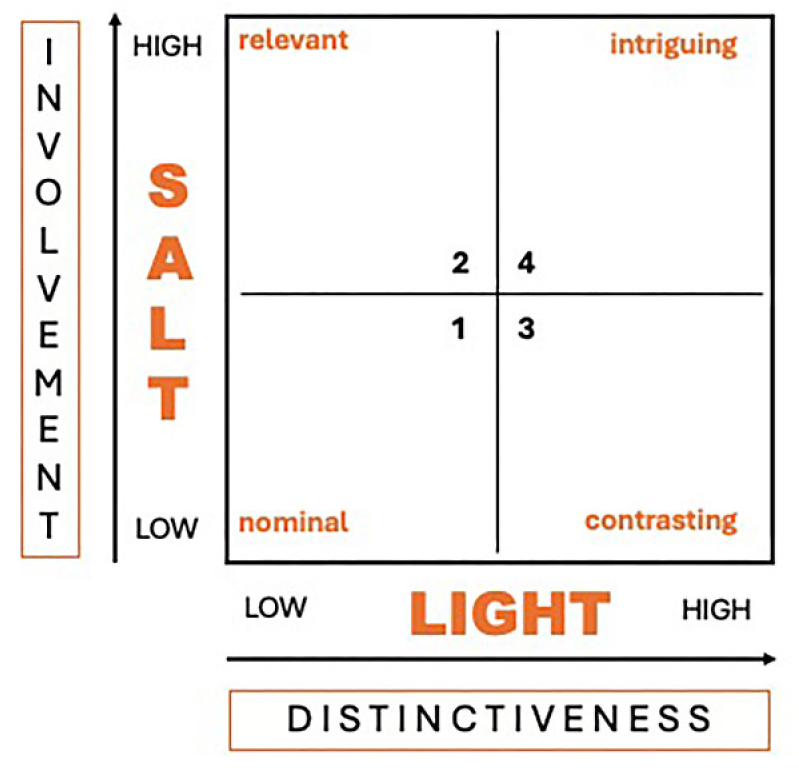
In it I found a new way of living. It helped me see the insufficiency in my own Q3 upbringing (High-Light; Low-Salt). It restrained me from the common over-reaction of swinging to the other (Q2) extreme. No! The way forward for me was about adding Q2, without deleting Q3, in order to move towards the tension that marks Q4: very involved, very distinct. It is not an easy tension to find, or to live. All these years later, I am collecting peoples’ descriptions of this life, like:
- "Fitting in and being different" (Larry Hurtado).
- "A faithful presence within the world" (James Davison Hunter)—faithful to God, yet present in the world.
- "They lived lives that contained a ‘yes’ and a ‘no’" (Alan Kreider).
- "(We need) churches that combine an unembarrassed commitment to a Christian identity with an open-ended presence in the world" (Stefan Paas).
The story of the church in Aotearoa New Zealand—where I was based through my 20s, 30s and 40s—is sadly disappointing. (Very) generally speaking, we got stuck in Q2, while thinking we were in Q4. There has been this breathless pursuit of relevance, seeing it to be the key to mission—but it isn’t, unless we are also nurturing "contrasting communities" (Michael Goheen). Targeting relevance without contrast not only misses the opportunity to be intriguing, it slips so easily into syncretism, the bane of the mission of God through the church everywhere—and far easier to see through a window than in a mirror!
In my 30s: a way of looking
Our little family moved to Auckland New Zealand a few weeks after my 30th birthday, when I joined the faculty of what is now known as Laidlaw College, a theological training institution. My main teaching responsibility would become the preaching classes, but for some reason senior lecturers Edward Sands and John Hitchen entrusted me with a big new course, entitled "The Gospel in a Post-Christian Society". I had to build it from scratch. Yikes! What were they thinking?
However there was inspiration lurking in the background. ‘New Zealand’s Newbigin’, Harold W. Turner, had recently returned home and was gathering people for chats about mission in a secular society. I went along, sitting quietly among the luminaries while finding many of his handouts to be incomprehensible. But one of them could not have been clearer—and more galvanizing for me. Turner’s three levels of mission, as described in his article, Deep Mission to Deep Culture, fascinated me—with "The Analogy of Marxism" being the penny-dropping moment. To my great delight, I recently found that original handout in my files:
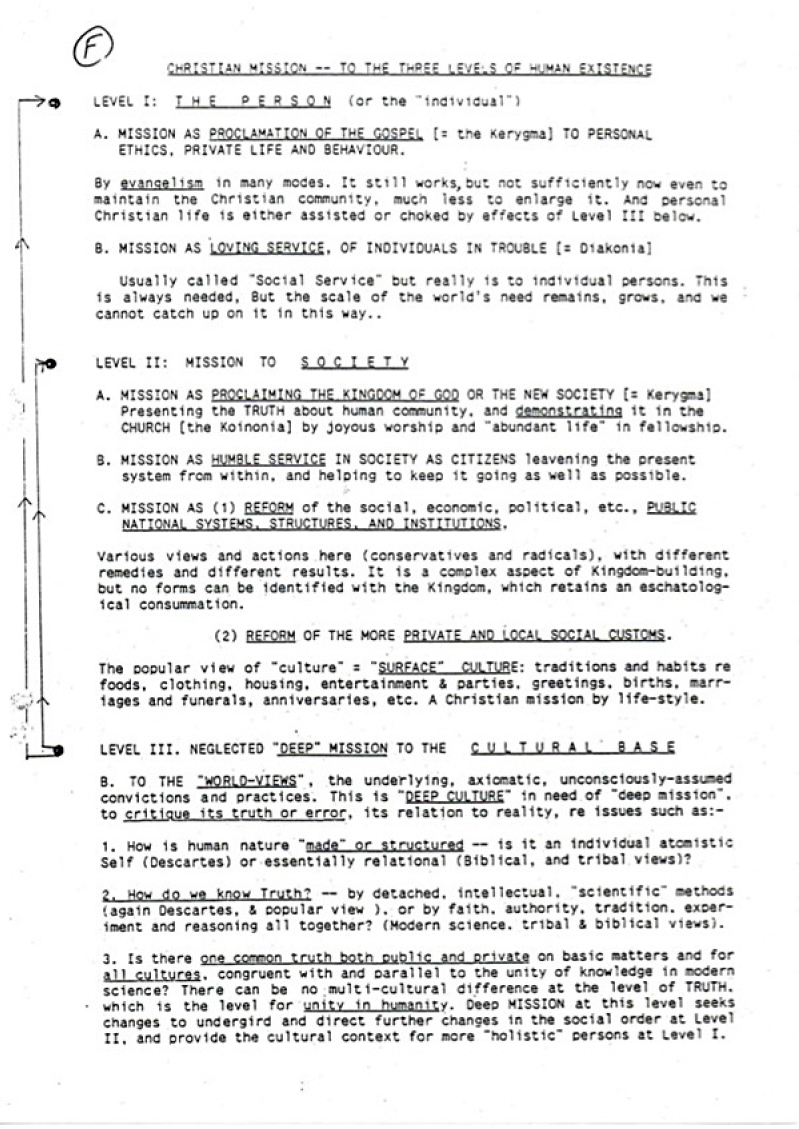
Turner argued that even though Level I & II mission may look successful, they can never be enough. There needed to be this "deep mission" to "deep culture" taking us into what is often called worldview. This is mission that unmasks ideologies, -isms and idolatries, with another little Lewisian classic coming to mind, ”the most dangerous ideas in a society are not the ones being argued, but the ones being assumed” (C. S. Lewis).
A new way of looking was needed. That misleading iceberg (still flooding the internet today as the authoritative image of worldview) needed to be melted and in its place have a tree planted in people’s minds. Assumptions lie below arguments. Roots lie below fruits. There is a “Level III” with culture.

This image unleashed a new passion: cultural exegesis. I was hooked. From Robin Hood movies to Calvin Klein perfumes, and a whole bunch of stuff in-between, I loved using this new way of looking. It pressed me towards (a) Going Deeper—developing the art and skill of tracing the fruit to its root; and (b) Being Patient—as botanical-agricultural imagery always reminds us to be. Things take time to grow, whether it be for good or ill.
In my 40s: a way of thinking
Yes, cultural exegesis was great fun. Looking at fruits, while wondering about roots. Listening to arguments, while probing for assumptions. But here is the issue: how do I engage all that I see and hear, above and below, with the gospel of Jesus, the worldview of God and the story of the Bible?
A new way of thinking was needed. I soon realized that, back in my 30s, there was a Stottian sentence (yep, that’s right—him again!) that could provide the spark:
"The Bible divides human history into epochs, which are marked not by the rise and fall of empires, dynasties or civilizations, but by four major events – the Creation, the Fall, the Redemption, and the End." (John Stott, Decisive Issues Facing Christians, 34)
— or, the good, the bad, the new, and the perfect.
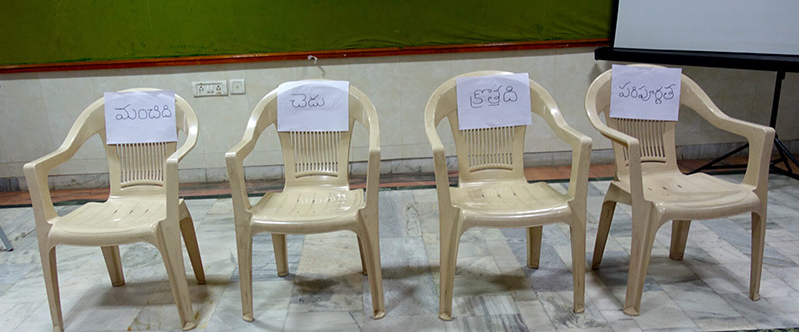
I represented the good, bad, new and perfect by four chairs. By interacting with these chairs, a new way of thinking emerged. I would (a) Make the chairs—telling the story of the "good-bad-new-perfect", by bringing out each chair one at a time and revealing their contribution the story from Genesis to Revelation; then we would (b) Play with the chairs—understanding the story, by moving the chairs around, even re-moving them one at a time, while asking probing questions as we did so…
… and, finally, we would (c) Sit in the chairs—living in the story. It is here that a new way of thinking emerges. The idea is to hold a metaphorical fruit or root—an argument or assumption—in the hands and sit in each chair, one at a time, asking questions of it which pertain to that specific chair. Gradually, one chair at a time, an understanding of how the gospel of Jesus, the worldview of God and the story of the Bible encounters that issue takes shape.
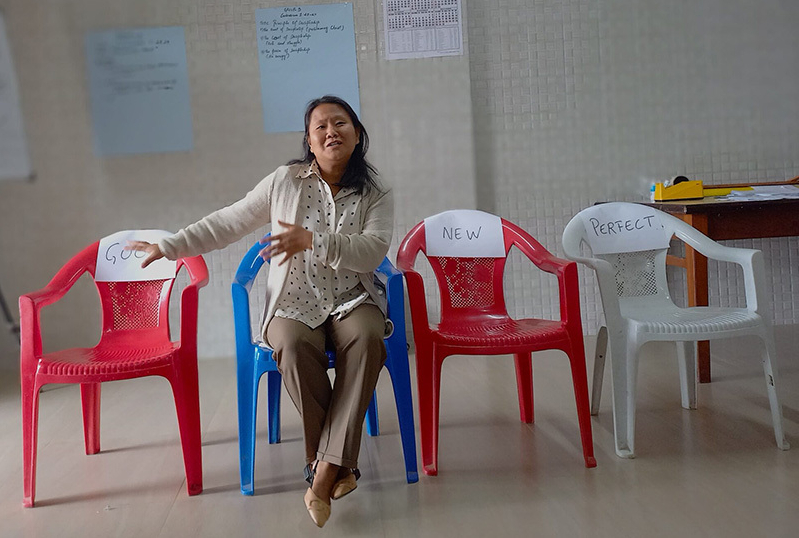
In my 50s: a way of exegeting
A few months before my 50th birthday, God drew me into the ‘pinch-me’ world of Langham Preaching—a ministry founded by the aforementioned John Stott. My life became filled with training preachers across Asia. As I traveled, largely in the wake of Stott’s influence, one of his phrases popped-up far more than any other…
Double Listening—by which he meant the importance of listening to both Word and World.
I had already come out as a double-listener, like when I opened both Nike and Ecclesiastes in a series of messages at a TSCF student conference—or, the time I added Lesslie Newbigin as a conversation partner in a series through 1 Peter. However as I traveled with Langham, I became a little frustrated. I was hearing plenty of preachers talk about the importance of double listening, but very few seemed to be doing it in their sermons…
Why was this the case? Something must be missing.
It dawned on me that while we had many methodologies for biblical exegesis, the same cannot be said for cultural exegesis—and certainly not at the grassroots level where we were working. I decided to experiment a bit. While acknowledging the accuracy in Kevin Vanhoozer’s expansive understanding of the world, I chose to focus on "the battleground on which to engage the enemy" and the hard stuff confronted by so many of the people with whom we worked.
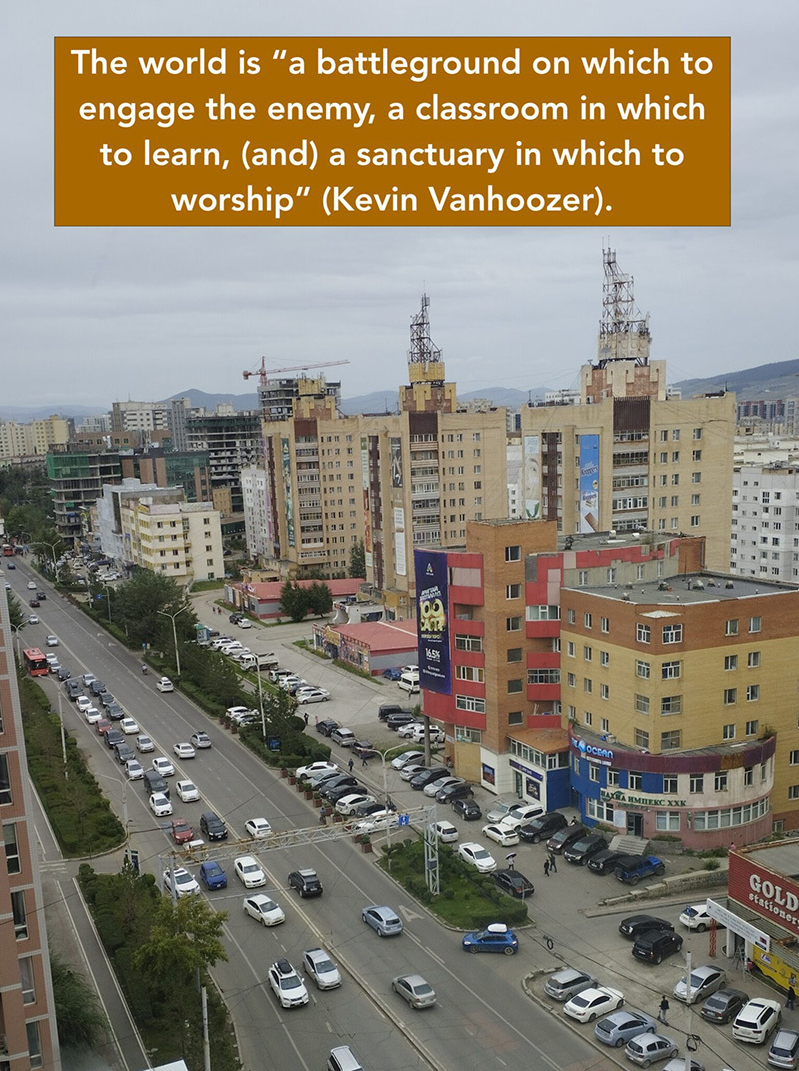
Five stages emerged in my experimental methodology. The first three were much the same as for biblical exegesis: 1. Selecting; 2. Listening; and 3. Understanding a cultural text. Then came the point of departure. As a means of 4. Engaging that text, I began by reading the New Testament looking for the imagery it uses to describe the world. I discovered 12-15 such pictures, but settled on six: darkness, emptiness, blindness, foolishness, groaning and slavery. They became the lenses through which to engage the hard stuff in a cultural text. Finally, it was about 5. Responding to that text, by developing a way to do so (i) instinctively, as evangelists, with an eye particularly on the fruit; and (ii) thoughtfully, as theologians, with an eye particularly on the root.

In my 60s: a way of loving and imagining
I trust that an unfinished decade can permit some thoughts that are still rather... unformed!
It was a revised edition of "The Universe Next Door" by James Sire that alerted me to a wind shift. In it he expanded his understanding of worldview. The prevailing imagery related to sight and cognition, with words like lens and worldview, seemed to be no longer adequate. Hmmm.
Then it was James K. A. Smith’s "You Are What You Love" that opened a new world to me. All kinds of memorable assertions come to mind: “The place to start is by attending to our loves” (p7), “You are what you love because you live toward what you want” (p13), “Our primary orientation to the world is visceral, not cerebral” (p33). If we think human beings are brains-on-a-stick, then we will fail to see surrounding cultural practices as liturgies, “as habit-forming, love-shaping rituals that get hold of our hearts and aim our loves” (p38).
Wow. So it is not just our thoughts, but also our loves? And it involves the affective as well as the cognitive? Goodness me, I should have listened more closely to my father, Dr Ray Windsor. As I headed off into pastoral ministry, all those years ago, he said to me “pay attention to peoples’ feelings because that is where their responses and behavior is sourced.” I don’t think I really believed him at the time—and yet Tim Keller (channeling Augustine, I believe) would concur with dad:
"Whatever captures the heart’s trust and love also controls the feelings and behavior. What the heart most wants, the mind finds reasonable, the emotions find valuable, and the will finds doable. It is all-important, then, that preaching move the heart to stop trusting and loving other things more than God… People, therefore, change not by merely changing their thinking but by changing what they love most." (Tim Keller, "Preaching", p159)
Such a focus on our loves is also closer to the way Jesus plays with the imagery of a tree—in Luke 6, for example.
We need a new way of loving—but then also a new way of imagining, as Charles Taylor explores in his book "A Secular Age". Here is another effort to stretch the idea of worldview beyond metaphors of sight related to the cerebral—and onto the significant role of the imagination. But I will need reflect more on that at a later time, once I feel that I understand Taylor better—in all likelihood, closer to my 70s, or 80s!
Originally published on Paul Windsor's blog, "The Art of Unpacking". Republished with permission.
Dr Paul Windsor is Program Director for Langham Preaching. After a childhood in India, a theological training in the USA and a pastoral ministry in Southland, New Zealand, Paul spent twenty years in theological education in New Zealand—first at Laidlaw College and then at Carey Baptist College, where he served as Principal. In 2009 he began working with Langham Partnership and has been the Programme Director for Langham Preaching since 2013.





